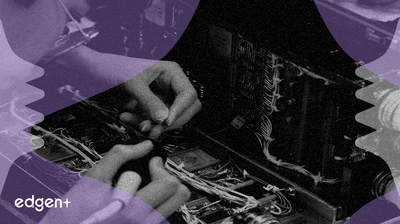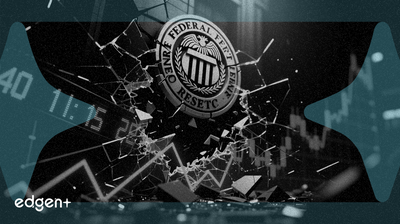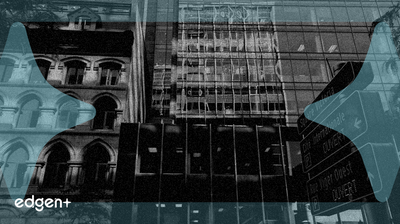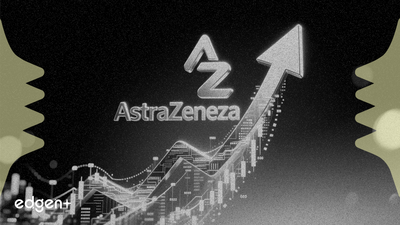
No Data Yet

## 事件详情 去中心化预测市场 **Polymarket** 上的多个账户通过在主要人工智能公司的公司里程碑公开宣布前不久下注,获得了可观的利润。一系列交易准确预测了 **OpenAI** 新大型模型的发布窗口。在一个单独且更引人注目的案例中,据报道,一个账户通过押注与 **谷歌** 2025年搜索数据相关的未公开细节,获利超过100万美元。这些事件强烈表明,有权访问非公开信息的人正在利用预测市场将其知识货币化,有效地从事内幕交易。 ## 解构金融机制 此类交易的动机根植于AI领域非凡的金融估值和资本密集度。**OpenAI** 的基准估值为 **5000亿美元**,这是在最近一次员工股票出售中确立的。该公司虽然尚未上市,但其估值取决于保持其技术领先地位。截至2025年6月,其年化收入运行率达到 **100亿美元**,这与巨大的资本需求相抵消。财务分析预测盈利之路充满挑战;**德意志银行** 的一项估计表明,**OpenAI** 在2024年至2029年期间可能累积 **1430亿美元** 的负自由现金流。 这种财务压力是全行业性的。**Alphabet (GOOGL)** 的市值约为 **3.7万亿美元**,正承诺为其AI建设投入预计超过 **900亿美元** 的资本支出。同时,竞争对手 **Anthropic** 获得了 **1830亿美元** 的估值,并与 **谷歌** 和 **微软** 等合作伙伴签订了价值数百亿美元的计算访问协议。在这种环境下,任何关于产品发布、合作协议或竞争定位的提前信息都具有巨大的货币价值。 ## 市场影响 与AI相关的事件出现内幕交易对市场有几个关键影响: * **监管风险加剧:** 这些事件几乎肯定会引起监管机构的审查,不仅针对像 **Polymarket** 这样的预测市场,也包括AI公司本身。这加剧了 **谷歌** 等公司面临的现有法律压力,该公司正面临欧盟对其AI概览的反垄断调查;以及 **OpenAI**,该公司正在应对多起非正常死亡诉讼。 * **AI相关股票波动性增加:** 市场已经显示出对AI领域新闻的敏感性。与AI有重大关联的上市公司,例如芯片制造商 **英伟达 (NVDA)** 和云服务提供商 **甲骨文 (ORCL)**,其股价因对“AI泡沫”和巨额支出可持续性的担忧而出现波动。信息泄露可能会加剧这些剧烈的价格变动。 * **信息不对称凸显:** 这些交易凸显了私人AI实验室内部一小部分内部人士与更广泛的公开市场之间存在的显著信息差距。尽管投资者使用 **GOOGL**、**AMD** 和 **MSFT** 等公开股票作为AI繁荣的代表,但私人公司估值和运营的不透明性质为信息套利创造了肥沃的土壤。 ## 专家评论 金融分析师和市场观察家越来越关注AI军备竞赛的财务可持续性。分析师的评论为所涉及的高风险提供了量化依据: > 根据 **路透社Breakingviews** 的分析,公开市场代理可以暗示私人公司更高的估值。该分析表明,**软银** 的公开股价暗示 **OpenAI** 的潜在估值约为 **7500亿美元**。 然而,这种乐观情绪被对现金消耗的严厉警告所冲淡。 > 《金融时报》报道的 **汇丰银行** 估计预测,**OpenAI** 到2030年可能需要筹集至少 **2070亿美元** 来支付其不断升级的计算和数据中心成本。 尽管存在这些成本,一些分析师仍对关键的公开参与者保持积极态度。**TD Cowen** 分析师John Blackledge将他对 **Alphabet** 的目标价上调至 **350美元**,理由是搜索中新的AI功能增加了用户参与度。**Evercore ISI** 呼应了这一观点,将其目标价定为 **325美元**,并将其与类似的AI驱动改进联系起来。 ## 更广泛的背景 可疑的内幕交易是少数主导AI实验室之间激烈技术和金融“军备竞赛”的直接产物。**OpenAI** 启动了“红色代码”,以加速 **GPT-5.2** 的发布,特别是为了对抗来自 **谷歌Gemini 3** 的竞争威胁。这种竞争迫使公司陷入无休止的开发和资本支出循环,其中保持竞争优势至关重要。 这些私人实体做出的战略决策对上市公司具有直接而重大的连锁反应。**OpenAI** 和 **谷歌** 的AI模型的成功或失败直接影响对 **英伟达** 和 **AMD** 等专业硬件、**微软** 和 **甲骨文** 等云服务以及 **迪士尼** 等公司的企业合作的需求。因此,任何能够一窥这些AI领导者未来发展轨迹的情报,现在都成为金融市场中最有价值——也可能是最非法——的商品之一。

## 執行摘要 POET Technologies 在 Northland Capital Markets 調高目標價以及與 Quantum Computing Inc. 達成戰略合作,共同為人工智慧 (AI) 基礎設施開發下一代光學引擎後,再次受到市場關注。這些發展使該公司在為 AI 繁榮提供動力所需的資料中心建設這場高風險競賽中,成為關鍵供應商。目前,該領域面臨財務和實體限制。 ## 事件詳情 12 月 3 日,**Northland** 的分析師將 **POET Technologies** 的目標價從 7 美元上調至 8 美元,反映出市場對該公司戰略方向的信心日益增強。這種樂觀情緒主要源於 11 月 11 日發布的一項公告,該公告詳細說明了與 **Quantum Computing Inc.** 的合作夥伴關係。兩家公司將共同開發 3.2 Terabits 每秒 (Tbps) 的光學引擎,專門設計用於處理現代 AI 和機器學習工作負載在資料中心內的大規模資料流需求。 ## 解讀財務機制 AI 基礎設施的蓬勃發展由前所未有的資本支出提供資金,而這越來越依賴於債務市場。根據美國銀行的一項分析,包括 **Google**、**Meta**、**Amazon** 和 **Microsoft** 在內的五大超大規模業者今年已發行約 1210 億美元的債券,以資助資料中心擴建。 例如,**Oracle** 最近報告的季度資本支出為 120 億美元,總債務約為 1000 億美元,主要用於支持其與 **OpenAI** 的合作夥伴關係。然而,這種以債務為動力的策略正受到審查,因為 Oracle 的債券殖利率正在擴大,這表明信貸投資者正在重新評估與這些大規模、長期專案相關的風險。 ## 分析業務策略與市場定位 POET 的策略是一種典型的 AI 淘金熱中的「淘金者工具」方法。該公司沒有與晶片巨頭競爭,而是專注於一個關鍵瓶頸:高速資料傳輸。透過開發專門的光學引擎,POET 成為整個生態系統的重要推動者。這種方法得到了超大規模業者面臨的巨大壓力所證實,他們需要最大限度地提高數十億美元資料中心投資的效率。與 Quantum Computing Inc. 的合作夥伴關係是旨在結合專業知識並加速為明確定義的高價值問題提供解決方案的針對性舉措。 ## 更廣泛的背景與市場影響 AI 的建設正在與物理現實發生衝突。資料中心研究員 Jonathan Koomey 指出,「位元世界移動迅速」,但「原子世界則不然」。報告指出,新資料中心的建設正受到物理組件(例如高壓變壓器和專業冷卻系統)採購嚴重延遲的阻礙,交貨時間延長至數年。 這些物理限制放大了技術效率的重要性。3.2 Tbps 光學引擎允許更高的資料吞吐量密度,使超大規模業者能夠從每平方英尺的資料中心獲得更高的性能。隨著像 **Oracle** 這樣的公司面臨不斷膨脹的資本支出和建設延遲,提高基礎設施投資效率和投資報酬率的技術變得至關重要。POET 的光學解決方案直接解決了這一需求,為緩解威脅減緩 AI 發展步伐的資料傳輸瓶頸提供了明確途徑。

## 执行摘要 量子计算公司 (QCi) 宣布将于 2026 年国际消费电子展 (CES) 首次亮相,标志着其量子光子学技术向商业应用展示的战略性推进。此举反映了更广泛的行业从理论研究转向实际用例,发生在新兴量子领域探索通向市场可行性的不同路径之际。在相邻的人工智能 (AI) 基础设施繁荣中观察到的巨大资本支出和供应链限制,以 **甲骨文** 等公司为例,为量子行业在追求规模化过程中将面临的财务和物流障碍提供了关键案例研究。 ## 详细事件 在拉斯维加斯举行的 2026 年国际消费电子展上,**量子计算公司** 计划进行现场演示,展示其量子光子学平台。该公司将专注于具有明确商业潜力的应用,包括优化金融市场结果、提高人工智能模型训练效率以及复杂的物流路线优化。本次公开展示旨在向投资者和潜在企业客户表明,其技术已发展到具有实际效用的阶段,超越了实验室的限制。 ## 市场影响 QCi 对商业演示的关注使其置身于一个以不同战略时间表为特征的竞争格局中。量子领域目前展现出两种主要方法。其中一种以 **D-Wave Quantum (QBTS)** 为代表,通过量子退火等技术优先实现近期商业化。这种策略已取得可衡量的成果,**D-Wave** 在最近一个季度报告的收入同比增长 100%,达到 370 万美元。另一种方法由 **Rigetti Computing (RGTI)** 等公司采用,专注于开发更具投机性、可能产生更高影响的长期技术。这条道路带来了更大的不确定性,正如 **Rigetti** 同期收入同比下降 18% 至 195 万美元所反映的那样。QCi 计划的展示将其定位为渴望进入前者阵营,旨在证明其近期的创收潜力。 ## 专家评论 行业分析师认为量子计算的发展是一把双刃剑,既提供变革性潜力,又带来重大挑战。专家指出它有能力“彻底改变医学,增强诊断,加速创新药物发现”,同时警告它可能“渗透到当前的数据加密模型中”,对数据安全构成系统性风险。 构建量子基础设施的道路也充满了物理和财务限制,这与人工智能领域当前的困境相似。数据中心研究员乔纳森·库米强调了这种摩擦: > “比特的世界发展迅速。原子的世界则不然。而数据中心正是这两个世界碰撞的地方。” 这种情绪强调了专业硬件和建设的漫长交付周期,无论投资水平如何,这都可能抑制量子发展速度的现实。 ## 更广泛的背景 构建下一代计算基础设施的财务现实为量子行业的雄心提供了清醒的背景。**甲骨文 (ORCL)** 最近的市场表现提供了一个引人注目的案例研究。该公司致力于为单一客户构建人工智能数据中心,导致一个季度内的资本支出达到 120 亿美元,并将其总债务扩大到约 1000 亿美元。这种激进的、债务驱动的战略令投资者不安,导致其债券收益率上升,并凸显了市场对高风险资本支出的敏感性。 虽然 **谷歌 (GOOG)**、**Meta (META)** 和 **亚马逊 (AMZN)** 等其他超大规模公司也发行了数十亿美元的债券来资助人工智能扩张,但它们更强的现金头寸和更高的信用评级提供了更稳定的基础。量子行业仍处于起步阶段,将不可避免地对其自身的专业数据中心面临类似的资本需求。像 **甲骨文** 这样的老牌科技巨头所面临的挑战表明,可扩展量子计算的道路将不仅取决于技术突破,还将取决于严谨的财务战略和供应链管理。

## 执行摘要 美国联邦储备委员会最近25个基点的降息暴露了政策制定者之间的重大分歧,并加剧了人们的担忧,即估值过高的股市而非经济放缓,构成了未来经济衰退的主要风险。尽管此次降息旨在支持正在降温的劳动力市场,但它发生在由人工智能繁荣推动的股票估值达到历史新高之际。**BCA Research** 的分析师警告称,“超额退休人员”的庞大群体使得美国经济特别容易受到市场下行影响,这给中央银行带来了艰难的政策困境,因为它需要在控制通胀和金融稳定之间取得平衡。 ## 事件详情 联邦公开市场委员会(FOMC)在12月会议结束时,将联邦基金利率下调至 **3.50%至3.75%** 的目标范围。这项决定并非一致通过,以 **9-3的投票结果** 获得通过,这表明内部异议日益增多。持不同意见的成员对在通胀仍高于美联储 **2%目标** 的情况下降息表示担忧。 支持这一决定的数据指向劳动力市场正在走弱。截至12月6日当周的首次失业金申请人数出现了自2020年3月以来的最大增幅。此外,美联储主席 **杰罗姆·鲍威尔** 承认,政府统计数据可能夸大了2025年每月多达6万个的就业岗位创造。这一背景使得美联储的双重使命复杂化,迫使其在放松政策以支持就业与重新引发通胀的风险之间进行权衡。 ## 市场影响 股市表现出显著的过度扩张迹象。**标普500席勒CAPE比率**,一项经通胀调整的估值指标,最近触及39——这一水平仅在1990年代末的互联网泡沫期间被超越。这次反弹主要集中在 **英伟达** 和 **Alphabet** 等科技股上,受到对人工智能的乐观情绪推动。 这种高估值环境使得市场特别容易受到 **BCA Research** 所描述情景的影响,即一次重大的修正可能引发经济衰退。其机制是对大量退休人口产生负财富效应,他们的消费比以往任何时候都更与他们的投资组合紧密相关。这颠覆了经济衰退先于市场崩盘的传统顺序。 ## 专家评论 美联储内部的分歧日益公开化。**芝加哥联储主席奥斯坦·古尔斯比** 尽管对12月份的降息持异议,但他表示预计未来一年利率“可能会大幅下降”。 相比之下,将于2026年成为FOMC投票成员的 **克里夫兰联储主席贝丝·哈马克** 主张采取“略微更严格的立场”,以确保通胀回归目标。前经济顾问委员会主席 **格伦·哈伯德** 则对经济仍在预计增长的情况下进一步降息的基本理由提出了质疑,这增加了鹰派观点。 ## 更广泛的背景 美联储的政策路径被重大的政治不确定性所笼罩。主席 **杰罗姆·鲍威尔** 的任期将于5月结束,特朗普总统已公开表示希望任命一位将推行更激进降息的继任者。这引发了投资者对中央银行未来独立性的担忧,而独立性是全球市场信心的基石。 与此同时,全球范围内的政策分歧日益明显。例如,**加拿大银行** 最近将其政策利率稳定在 **2.25%**,理由是GDP增长强于预期和劳动力市场改善。这种跨大西洋的货币政策分歧凸显了美国经济在应对高通胀和不稳定市场高度这两个双重挑战时所面临的独特压力和风险。

## 执行摘要 标普500指数在科技股持续的AI驱动涨势下,突破6,900点,创下历史新高。这一里程碑标志着该指数连续第三年实现两位数百分比涨幅。然而,这种看涨势头目前面临着巨大的阻力。估值已达到历史高位,席勒市盈率 (Shiller CAPE ratio) 达到39,这一指标仅在互联网泡沫时期见过。同时,美联储进行了“鹰派”降息,预示着谨慎的前景。这些因素正在促使市场资金从大型科技龙头转向周期性行业。投资者目前的注意力集中在11月延迟发布的美国经济数据密集日程上,预计这些数据将决定短期市场走向。 ## 事件详情 本周,**标普500**指数首次突破6,900点里程碑,使其年初至今的涨幅达到**16.34%**。这一表现主要得益于少数几家专注于AI的科技公司,包括**英伟达 (Nvidia)**和**谷歌母公司Alphabet**的超常回报。相比之下,**标普等权重**指数年初至今仅上涨了相对温和的**10.42%**,凸显了涨势的集中性。美联储于12月10日决定将联邦基金利率下调**0.25个百分点**至**3.50%–3.75%**的目标区间,进一步支撑了市场的上涨。尽管降息,但央行谨慎的评论抑制了对持续宽松周期的预期。 ## 市场影响 尽管创下历史新高,但潜在的市场动态表明情绪正在发生变化。经通胀调整的估值衡量指标**标普500席勒市盈率**目前为39。这是150多年来的第二高水平,表明股票相对于历史收益而言价格昂贵。从前瞻性角度来看,该指数的交易价格约为**预期收益的22倍**,远高于其10年平均水平。 这种高估值环境正在促成行业轮动。自11月下旬以来,小型股的**罗素2000指数**已上涨**11%**,显著优于大型科技股。最近的资金流动数据证实了这一趋势,显示美国股票基金每周流入**33亿美元**,新资金青睐周期性行业,例如**金属与采矿**、**工业**和**医疗保健**。AI领头羊**甲骨文 (Oracle)**和**博通 (Broadcom)**令人失望的预测加速了轮动,这些预测引发了对AI行业高资本支出获利能力的担忧。 ## 专家评论 华尔街策略师越来越建议客户分散投资,避免所谓的“七巨头”科技股。**摩根士丹利 (Morgan Stanley)**美国股票首席策略师Michael Wilson指出,市场可能正在进入通常有利于周期性落后股的“早期周期背景”。同样,**Strategas资产管理公司 (Strategas Asset Management)**董事长Jason De Sena Trennert预计2026年将出现金融股和非必需消费品股的“大规模行业轮动”。支持这一观点的是**Yardeni Research**的Ed Yardeni,他自2010年以来一直超配科技股,最近建议减持,预计市场利润增长将普遍化。根据**高盛集团 (Goldman Sachs Group Inc.)**的数据,标普500除其七大公司之外的盈利增长预计将在2026年加速至**9%**。 ## 更广泛的背景 市场正处于复杂的宏观经济环境中。美联储将其最近的降息描述为“鹰派”,官员们表示通胀风险仍然偏向上行,而就业风险偏向下行。投票结果显示存在显著分歧,提高了未来降息的门槛。 近期不确定性的主要来源是为期43天的联邦政府停摆,这导致主要经济报告延迟发布。因此,**11月就业状况**、**零售销售**和**消费者物价指数 (CPI)**都计划在12月16日至18日之间的压缩窗口内发布。**劳工统计局 (Bureau of Labor Statistics)**已告知10月份的就业和CPI数据将不予发布,这带来了分析挑战。这些数据将在12月19日“三巫日”衍生品到期前发布,这是一个以交易量增加和潜在波动性著称的时期,这可能会放大市场对经济数据的反应。

## 执行摘要 公司正在以明确的战略分歧应对动荡的市场。一条路径涉及积极的运营紧缩,例如 **Opendoor** (**OPEN**) 在收入大幅下滑后采取的新的成本削减战略。另一条路径是资本密集型地推向专有技术,像 **Rivian** (**RIVN**) 这样的公司正大力投资内部 AI 开发以建立竞争护城河。这种分歧反映了一个市场,公司必须要么成为超高效的运营商,要么成为技术领导者,中间几乎没有犯错的余地。 ## 事件详情:两个转型的故事 **Opendoor** 2025 年第三季度的业绩突显了房地产市场的挑战,收入同比下降 34%。作为回应,新任 CEO 启动了一项战略,重点是积极削减成本、减少库存,并通过 2 亿美元的股权融资来支撑资产负债表。这是一套经典的防御性转型策略,旨在宏观经济逆风和潜在的股东稀释中实现稳定。 相比之下,**Rivian** 正在奉行一项进攻性的、技术驱动的战略。该公司宣布对其自动驾驶平台采取“全新方案”,其中包括开发定制的 **Rivian 自动驾驶处理器 (RAP1)**。此举代表着从 **英伟达** (**NVDA**) 等第三方供应商转向垂直整合的战略转变。市场对此反应积极,使 **RIVN** 股价上涨 12.1%,并促使 Needham 将目标价提高到 23 美元,上涨 64%。该战略旨在通过专有的“数据飞轮”创造长期优势,即车辆数据不断改进 AI 模型。 ## 市场影响:大分歧 紧缩与 AI 投资之间的战略分歧在整个市场中显而易见。AI 繁荣正在为主要供应商创造巨大价值,**博通** (**AVGO**) 报告的年收入达到创纪录的 640 亿美元,其 AI 组件的订单积压达到 730 亿美元。这表明大量资本流向了那些能够推动 AI 革命的公司。 与此同时,面临直接消费者和宏观经济压力的行业正在采取防御姿态。在餐饮服务领域,领导者正专注于运营清晰度,进行广泛的 SKU 整合,并强调效率而非复杂的创新。同样,**Johnson Outdoors** (**JOUT**) 在收入持平的情况下,将其运营亏损从 4350 万美元改善至 1620 万美元,这归因于成本节约措施。这种趋势也反映在私募股权领域,2025 年第三季度的交通运输交易流因不确定性而停滞,即使对 AI 驱动的卡车运输和物流技术的投资仍在继续。 ## 专家评论:内部开发与效率 华尔街奖励了 AI 领域的战略大胆。Needham 分析师 Chris Pierce 在评论 **Rivian** 时指出,该公司“预示着从采用自动驾驶的 OEM 转向利用 AI 构建端到端自动驾驶的公司”。这凸显了拥有整个技术栈的感知价值。 更广泛的原则是,AI 是一种变革性的经济力量。正如 Filed 首席执行官 Leroy Kerry 在会计行业背景下所说,AI 允许公司“从根本上重塑该领域的经济学”,通过将专业人士从日常任务转移到战略咨询角色。 然而,卓越的运营仍然是成功的关键驱动因素。Esrock Partners 首席执行官、餐饮服务专家 Kevin Wilson 主张回归基本面。 > 我们已经美化了颠覆,但推动增长的将是运营清晰度。 这种观点抓住了 **Opendoor** 和 **Johnson Outdoors** 的战略,即在市场逆风面前,生存和未来增长取决于精简运营。 ## 更广阔的背景:AI 飞轮与企业战略 **Rivian** 开发自己的芯片和软件的计划是科技巨头率先垂直整合的更大趋势的一部分。通过创建像 RAP1 这样的定制处理器,**Rivian** 遵循了类似于 **Google** 开发其 Tensor 处理单元 (TPU) 或 **博通** 在用于 AI 数据中心的定制设计 XPU 领域的主导地位的策略。该战略旨在创建一个“数据飞轮”——一个自我改进的系统,其中不断增长的车队收集专有数据,进而训练和增强中央 AI 模型,从而巩固公司的竞争优势。 当前的市场环境迫使企业进行战略调整。公司再也无法承担占据中间立场的代价。前进的道路似乎是一个明确的选择:要么精简成为一流的、低成本的运营商,要么果断投资成为专有技术领导者。那些未能致力于其中一条道路的公司,可能会被更专注的竞争对手超越。

## 执行摘要 Atlassian (**TEAM**) 正在应对一个充满挑战的市场,其股价今年迄今已下跌 32.6%,这与估值模型显示该公司被严重低估的情况形成对比。贴现现金流 (DCF) 分析将其内在价值定在每股 246 美元左右,比其当前交易价格高出 33.7%。这种差异并非孤立存在;它反映了市场对科技股的普遍抵制,因为投资者对人工智能扩张的高成本以及产生回报的时间线越来越持怀疑态度,这种情绪也影响了 **Oracle** (**ORCL**) 和 **Broadcom** (**AVGO**) 等行业巨头。 ## 事件详情 推动此次分析的主要数据点是 **Atlassian** 市值的显著下降。该股在过去一年中下跌了 41.5%,对于一家与云计算和人工智能领域强劲增长相关的公司来说,这是一个严峻的下滑。根据基本估值模型,该股的表现与其预计的现金流脱节。DCF 模型估计其内在价值为每股 246.37 美元。这一估值表明市场目前对 Atlassian 的定价大致折价 33.7%,这预示着投资者根深蒂固的不确定性超越了传统的财务指标。 ## 市场影响 **Atlassian** 股价面临的压力似乎是整个行业风险重新评估的直接结果。市场目前表现出一种惩罚科技公司的模式,因为它们在人工智能领域进行了大规模支出,却没有明确而直接的盈利途径。这一趋势在市场对 **Oracle** 为数据中心扩张进行大量借贷以及 **Broadcom** 尽管业绩强劲但仍存在利润担忧的反应中显而易见。对于 **Atlassian** 而言,这意味着其增长叙事正被宏观经济逆风和投资者集体从高估值增长资产中撤离所掩盖。其 DCF 价值与市场价格之间的巨大差距表明,短期情绪是主导交易的因素。 ## 专家评论 虽然在提供的材料中没有直接引用分析师对 **Atlassian** 的评论,但对更广泛科技格局的评论提供了关键背景。普遍的情绪是谨慎。关于人工智能基础设施的大量投资,法国巴黎银行分析师 Stefan Slowinski 告诉雅虎财经:“目前,市场只是说,‘我们对所有这些资本支出的回报没有信心。’”这捕捉到了影响该行业的焦虑。 DA Davidson 分析师 Gil Luria 也表达了对 **Oracle** 对 **OpenAI** 的大量承诺的担忧,强调了这样一种情况,即公司必须“借大量资金来做到这一点,而客户是否能够支付这笔容量的费用存在很高的不确定性。”这种对大规模人工智能项目财务可行性的普遍怀疑是影响 **Atlassian** 等股票抛售的主要因素。 ## 更广阔的背景 市场目前的状况受到多种因素的共同影响,包括不断上升的国债收益率和美联储内部对未来降息时机的异议。2025 年 12 月 12 日,科技股权重较大的 **纳斯达克综合指数** 下跌 1.7%,**费城半导体指数** 暴跌 5.10%,凸显了人工智能相关抛售的严重性。 **Oracle** 股价在披露 **OpenAI** 占其剩余履约义务超过 3000 亿美元后从高点下跌了 40% 以上,造成了重大的客户集中风险。同样,**Broadcom** 股价在其财报公布后下跌,因为投资者关注其不断增长的人工智能业务可能带来的利润压力。这种市场行为——在任何执行风险或不确定盈利能力的迹象出现时抛售——为所有科技公司(包括像 **Atlassian** 这样财务状况良好的公司)建立了一个困难的环境,因为它们都受到同样的怀疑标准评判。

## 执行摘要 **Flex Ltd.** 正在通过利用数据中心市场不断增长的需求,战略性地应对汽车行业的逆风。该公司可靠性解决方案部门表现出韧性,其专注于数据中心的电力部门的增长弥补了汽车业务的疲软。这一转型与整个技术行业大规模、人工智能驱动的资本支出周期相一致,但也使公司面临潜在过热市场的风险。 ## 事件详情 Flex 的可靠性解决方案部门报告称,收入同比增长 3% 至 30 亿美元。这种增长在该部门并非均匀分布。该公司明确将积极表现归因于其电力业务,该业务为数据中心提供关键组件。这种实力足以抵消其汽车业务的同期下滑,汽车业务是一个目前面临自身独特市场压力的行业。这种战略性制衡凸显了 Flex 运营战略中收入重点的刻意多元化。 ## 市场影响 **Flex** 的举动是直接回应数据中心建设和装备领域蓬勃发展的局面,这几乎完全由人工智能的扩张所推动。这一市场普遍现象的证据是广泛的。例如,在德克萨斯州,能源部门已收到超过 220 吉瓦的新项目连接请求,其中 70% 以上是数据中心。这导致一些分析师警告可能存在投机性“泡沫”。 这种需求沿着供应链向下传导。**Broadcom** (**AVGO**) 最近报告了超过 730 亿美元与人工智能相关的积压订单,其中很大一部分与超大规模数据中心的定制芯片 (XPU) 和网络硬件有关。该公司证实了来自 **Anthropic** 等人工智能公司的数十亿美元订单,这进一步证明了当前资本投资的规模。同样,**Applied Materials** (**AMAT**) 引用客户对人工智能相关技术的制造设备的大量投资作为其财务业绩的关键驱动因素。 ## 专家评论 数据中心扩张的规模引起了市场观察者的评论。关于德克萨斯州的激增,德克萨斯大学奥斯汀分校研究科学家 Joshua Rhodes 表示:“它看起来、闻起来、摸起来——行为都像是一个泡沫。” 相比之下,科技高管们则预示着持续的势头。**Broadcom** 首席执行官 Hock Tan 预测持续增长,他表示:“我们看到客户在人工智能方面的支出势头将持续加速到 2026 年。” **Nvidia** (**NVDA**) 首席执行官 Jensen Huang 也呼应了这一观点,他断言“人工智能已经达到了一个转折点”,这表明投资周期远未结束。 ## 更广阔的背景 Flex 的战略是经典商业转型的典范:利用高增长行业来减轻衰退或周期性行业中的风险。通过将重心转向数据中心供应链,该公司将自身与当今技术领域的主要增长叙事对齐。这条道路几乎被半导体和硬件领域的每一个主要参与者所追随,包括 **Nvidia**、**Broadcom** 和 **Advanced Micro Devices** (**AMD**)。 然而,这一战略并非没有风险。德克萨斯州数据中心“泡沫”的警告强调了过度投资和未来整合的可能性。如果对人工智能基础设施的需求放缓,那些严重依赖这一单一驱动因素的公司可能会面临巨大的逆风。目前,**Flex** 正在成功地驾驭强大的需求浪潮,但其长期成功将取决于驾驭技术投资周期固有的波动性。

## 执行摘要 **Chipotle Mexican Grill (CMG)** 将庆祝其第4,000家餐厅开业,首席执行官Scott Boatwright将在纽约证券交易所敲响开市钟。这一企业里程碑事件发生之际,市场出现显著分歧,**标准普尔500指数**和**道琼斯工业平均指数**创下历史新高,而科技股权重较高的**纳斯达克综合指数**却在下跌。该事件凸显了更广泛的市场轮动,投资者似乎正将焦点从面临盈利能力问题的、高估值的科技股转向像Chipotle这样拥有切实增长和强大运营基本面的公司。 ## 事件详情 位于堪萨斯州曼哈顿的第4,000家Chipotle餐厅,是公司战略增长计划中的一项重要成就。新店配备了用于数字订单取货的**“Chipotlane”**,并引入了新的高效设备包,旨在提高吞吐量和简化厨房运营。自2017年以来,公司门店数量增长了70%,从2,300家增至4,000家。管理层已勾勒出明确的前进道路,计划在2025年开设315至345家新餐厅,2026年开设350至370家。该战略包括一项重要的国际扩张计划,在**科威特**开设合伙经营门店,并即将进驻**墨西哥**、**韩国**和**新加坡**。 ## 市场影响 Chipotle庆祝活动的时机值得关注,因为它与近期科技行业的情绪形成鲜明对比。尽管**标准普尔500指数**和**道琼斯指数**等主要指数在金融等行业的推动下上涨,但**纳斯达克指数**却表现滞后。这种疲软很大程度上归因于投资者对人工智能开发成本及其近期盈利能力的担忧。例如,**甲骨文 (ORCL)** 股价在发布与高额人工智能相关资本支出挂钩的悲观预测后下跌近14%。同样,**博通 (AVGO)** 股价尽管收入预测强劲,但仍下跌,因为该公司警告称,人工智能驱动的收入增长可能使毛利率压缩约100个基点。 ## 专家评论 市场分析师正日益审视人工智能热潮的财务机制。对**甲骨文**和**博通**财报的反应表明,市场现在在评估人工智能相关增长时,正在追问“以什么利润率为代价?”。叙事已从单纯的收入扩张转向利润的可持续性。在这种环境下,像Chipotle这样展示出清晰且经过验证的实体扩张、运营效率和可预测收入增长模式的公司,成为资本的一个有吸引力的替代选择。其战略不依赖于投机性技术,而是基于明确且可执行的商业计划。 ## 更广阔的背景 这种市场动态反映了从增长股到价值股的经典轮动,并受到当前宏观经济环境的放大。在降息四分之一个百分点后,**美联储**已发出可能暂停加息的信号,从而创造了一个更具辨识力的投资环境。投资者正从估值具有投机性的行业转向那些拥有韧性商业模式的行业。**Visa (V)** 和**万事达卡 (MA)** 等金融股以及Chipotle等面向消费者的公司表现强劲,这表明市场正在更广泛地寻求稳定性。因此,Chipotle的里程碑不仅仅是一项企业成就;它是一个数据点,说明了投资者情绪和资本配置在市场范围内的关键转变。

## 事件详情:AI股票面临估值审查 2025年12月12日星期五,市场发生显著转变,投资者纷纷从与人工智能交易相关的高估值股票中撤出。数据中心电源和热管理的关键供应商 **Vertiv Holdings Co. (VRT)** 成为情绪变化的代表,其股价下跌 **9.73%**,收于 **$161.27**。此次下跌伴随着交易量较日均水平高出约44%,预示着重大的投资者活动。 此次抛售并非由公司特定新闻驱动,而是由科技巨头 **Oracle (ORCL)** 和 **Broadcom (AVGO)** 的评论引发的更广泛的市场担忧,这些评论重新引发了对AI领域泡沫估值的担忧。 **Wolfe Research** 最近将 **Vertiv** 评级下调至“与同行持平”,并将其排除在最新一轮 **S&P 500** 成分股之外,这使得市场对 **Vertiv** 的影响雪上加霜。 ## 市场影响:差异化的行业影响 市场开始区分长期AI趋势和实现其价值的公司的近期估值。 对于像 **Vertiv** 这样的 **AI基础设施** 公司,股价的波动反映了其作为AI数据中心建设直接受益者的地位。尽管对其电源和冷却解决方案的潜在需求依然强劲,但该股对“AI资本支出”叙事的转变敏感。目前的压力凸显了强劲基本面——共识估计预测 **44.2% 的同比每股收益增长**——与市场日益质疑AI投资的即时回报之间的紧张关系。 对于以 **Palo Alto Networks (PANW)** 等平台领导者为代表的 **网络安全** 领域,AI呈现出两面性。根据《福布斯》2026年的预测,AI正成为“攻击者的操作系统”,自动化并扩大网络威胁。这一趋势加剧了对先进的、AI驱动的防御平台的需求。 **普华永道** 的一项调查指出,**52% 的 CISO** 计划整合安全工具,这一战略转变有利于提供像 **PANW** 这样集成解决方案的公司。 ## 专家评论:基本面与情绪 尽管市场情绪波动,金融分析师对这些行业的基本面前景仍持乐观态度。对 **Vertiv** 的共识评级仍为“买入”,平均分析师目标价为 **$188.13**。值得注意的是, **高盛** 最近将其目标价上调至 **$204**,而 **花旗集团** 则将其目标价上调至 **$220**,这凸显了对该公司长期增长轨迹的信心,这与最近的股价走势形成鲜明对比。 在网络安全领域,专家分析指出企业优先事项正在演变。 **德勤** 的一项董事会调查发现,“网络韧性”和恢复速度现在是首要指标,超过了传统的合规性检查。这与行业报告一致,即身份泄露是导致数据泄露的主要原因。 **德勤** 的案例研究表明,AI驱动的身份系统可以将事件分析时间减少 **70-80%**,从而增强了复杂安全提供商的价值主张。 > “身份泄露仍将是2026年数据泄露的主要原因。身份边界已成为真正的边界。” - 《福布斯》,“2026年将定义的十大网络安全预测” ## 更广阔的背景:对数字基础设施的坚定需求 尽管个别股票价格波动,但对数字基础设施的基础需求是不可协商的。估计 **99% 的所有国际互联网流量** 都是通过海底光缆网络传输的,这证明了全球数据流的规模。这个骨干网络主要由 **Google (GOOGL)**、**Microsoft (MSFT)** 和 **Meta (META)** 等超大规模企业资助,为从云计算到当前AI超级周期的所有事物提供动力。 最近影响 **Vertiv** 和 **Palo Alto Networks** 等股票的市场动荡并非对这一潜在趋势的否定。相反,它们代表了投资者从“不惜一切代价增长”的心态转向要求更清晰盈利路径的理性风险重定价。支撑AI革命的基础设施和安全的投资核心论点保持不变;争论已转向入场价格。

## 执行摘要 Rivian Automotive, Inc. (**RIVN**) 股价在 2025 年 12 月 12 日上涨约 17% 至每股 19 美元,此前该公司在其 Autonomy & AI Day 上详细阐述了其向垂直整合和经常性收入的战略转型。专有 AI 处理器和新的订阅服务 **Autonomy+** 的宣布,将投资叙事转向关注 Rivian 作为一家“AI 定义”的汽车公司。此次上涨从半导体巨头 **博通** (**AVGO**) 轰动的季度业绩中获得了进一步的动力,博通的业绩为加速的 AI 投资周期提供了强有力的证据。尽管市场反应积极,但华尔街仍然两极分化,分析师们对该公司长期的 AI 雄心是否能超越电动汽车市场近期执行风险和宏观经济逆风存在分歧。 ## 事件详情:Rivian 的战略转型 在其首届 Autonomy & AI Day 上,Rivian 概述了控制其技术栈并产生高利润软件收入的明确战略。核心是 **Rivian Autonomy Processor (RAP1)**,这是一款由 **台积电** 制造的定制 5nm 芯片,将为下一代 **Autonomy Compute Module 3 (ACM3)** 提供动力。此举代表了一项重大的垂直整合努力,旨在优化性能和成本,与 **特斯拉** 的内部硬件战略相媲美。 为了将这项技术货币化,Rivian 推出了 **Autonomy+**,一项将于 2026 年初推出的驾驶辅助订阅服务。财务机制很简单:客户可以选择 **一次性购买 2,500 美元** 或 **每月支付 49.99 美元**。这种模式对于 Rivian 实现以可预测的、高利润的、经常性收入流补充汽车制造利润的目标至关重要。该公司还证实,它将在其即将推出的 **R2** 车型(预计在 2026 年底前推出)中集成 **LiDAR**,以增强传感器冗余。 ## 市场影响:博通验证了 AI 论点 Rivian 的公告发布在一个为 AI 叙事做好准备的市场中,这一情绪得到了 **博通** 第四季度财报的强力验证。博通报告收入达到创纪录的 180.2 亿美元,同比增长 28%,其中基于 AI 的收入猛增 74%。首席执行官 Hock Tan 证实,AI 初创公司 **Anthropic** 最初订购了 100 亿美元的芯片,随后又追加了 110 亿美元的订单,这突显了流入 AI 基础设施的巨额资金。 博通还报告了与 AI 相关的总积压订单达到 730 亿美元。这些数据提供了确凿的证据,表明对 AI 硬件的需求不仅强劲,而且在 2026 年正在加速增长。这种更广泛的市场背景为 Rivian 的战略转型提供了重要的可信度,表明其对定制芯片和 AI 驱动功能的投资与持久的、资金充足的技术趋势相符。市场正在奖励那些被认为是 AI 热潮受益者的公司,而 Rivian 现在更坚定地属于这一类别。 ## 专家评论:华尔街的分歧 市场对 Rivian AI 战略的热情并未在金融分析师中普遍分享,导致了严重的分歧。 > **Needham** 提出的看涨观点是,Rivian 正在正确地将自己定位在“软件定义(现在是 AI 定义)车辆”主导的未来。该公司将其对 RIVN 的目标价从 14 美元上调至 **23 美元**,并重申“买入”评级,表达了对长期战略的信心。 > 相比之下,**摩根士丹利** 的谨慎观点强调了近期重大的障碍。该银行最近将 Rivian 评级下调至“减持”,目标价 **12 美元**,理由是美国联邦电动汽车税收抵免在 2025 年 9 月 30 日之后到期,这将是电动汽车需求的主要逆风。他们的分析优先考虑了在更具挑战性的经济环境中推出大众市场 R2 平台相关的执行风险。 ## 更广阔的背景和风险 尽管 Rivian 以 AI 为中心的叙事吸引了投资者的兴趣,但该公司面临着巨大的运营和市场特定风险。其自动驾驶路线图(包括 **Autonomy+** 订阅)的货币化并非立竿见影,关键硬件和软件功能要到 2026 年及以后才能实现。这种长期回报必须与更直接的压力(包括现金消耗、扩大生产和管理召回)进行权衡。 联邦电动汽车税收抵免的结束是一个重要的外部变量,预计将在 2026 年削弱整个电动汽车行业的需求。对于像 Rivian 这样尚未持续盈利的公司来说,这一政策转变增加了相当大的压力。当前投资者的困境是,是根据 Rivian 作为长期 AI 和软件平台的潜力(由行业趋势验证)来定价 **RIVN**,还是根据在降温市场中扩大汽车制造业务的更直接的财务和运营挑战来定价。

## 执行摘要 华尔街对**花旗集团 (C)** 和 **Alphabet (GOOG)** 投下了强烈的信任票,摩根大通上调了这家银行业巨头的评级,道富投行则提高了这家科技巨头的目标价。分析师的行动反映出对**花旗集团**正在进行的扭亏为盈战略以及**Alphabet**成功将人工智能整合到其核心产品中的乐观态度。这些支持为两只股票提供了进一步的动力,它们今年迄今已录得显著涨幅。 ## 事件详情 ### 花旗集团因扭亏为盈势头获得升级 摩根大通将**花旗集团**的股票评级从“中性”上调至“增持”,这验证了首席执行官简·弗雷泽领导的战略简化和重组努力。该银行的股票今年已上涨约 59%,超过了**摩根大通 (JPM)** 和 **美国银行 (BAC)** 等竞争对手。尽管出现反弹,**花旗集团**股票的估值仍然较低,远期市盈率为 11.2,而**摩根大通**为 15.04,**美国银行**为 12.5。摩根大通的分析师指出,“盈利能力的提高将是进一步上涨的关键驱动力。” ### Alphabet 目标价因 AI 增长而上调 道富投行重申了对**Alphabet**的“买入”评级,并将其目标价从 335 美元上调至 350 美元。该公司的信心建立在**Alphabet**的 Gemini AI 被广泛采用及其与谷歌搜索的整合之上。根据调查数据,AI 概览的使用正在推动更高的用户参与度。道富投行已将谷歌搜索未来五年复合年增长率的预测上调至 10.2%,并预计到 2025 年底 Gemini 的月平均用户数可能达到 8.5 亿。 ## 市场影响 主要分析师公司的双重支持强化了对两种截然不同但强大的市场叙事的积极投资者情绪。对于**花旗集团**而言,此次升级表明其复杂、多年的扭亏为盈正在产生切实的成果并获得信誉,有可能缩小与同行之间的估值差距。对于**Alphabet**而言,修订后的目标强调了人工智能的成功货币化和战略部署,以增强其主导的搜索业务,使其在正在进行的人工智能军备竞赛中处于竞争优势。 ## 专家评论 市场分析师一直公开支持这两家公司。 关于**花旗集团**,富国银行分析师迈克·梅奥(Mike Mayo)——一位长期看好该股票的人——表示,“花旗一直是我们在 2025 年的首选……它仍然是我们 2026 年的首选。”他此前曾预测该股票可能在三年内翻一番。 摩根大通分析师为此次升级补充了背景: > “这些[扭亏为盈的努力]应会继续随着时间的推移提高花旗的盈利能力——有形普通股回报率应会超过同行。估值已从低点改善,盈利能力的提高将是进一步上涨的关键驱动力。” 关于**Alphabet**,道富投行详细说明了其修订估值背后的驱动因素: > “我们根据积极的美国调查数据上调了 GOOG 搜索的估值,这些数据表明:i) Gemini 3 发布后 Gemini 聊天机器人使用量激增,ii) AI 模式和 AI 概览使用量驱动的搜索参与度持续增加,以及 iii) 越来越多的 ChatGPT 用户也在使用 Gemini。” ## 更广阔的背景 对**花旗集团**的积极展望与摩根大通的预期一致,即更广泛的银行业有望从“稳健的经济、强劲的市场和 2026 年有利的监管环境”中受益。同时,**Alphabet**在 Gemini 方面的成功凸显了科技领域的一个关键趋势,即老牌领导者正在利用其规模和现有平台部署生成式人工智能。这一战略不仅捍卫了他们的市场份额,还为增长和用户参与创造了新的途径,展示了人工智能货币化的清晰路径。

## 执行摘要 台湾已正式启用位于台南的新的国家云计算中心,此举具有战略意义,巩固了其在全球人工智能领域不可或缺的作用。该设施容纳了“Nano 4”超级计算机,由**英伟达**的尖端芯片提供动力,并由**台湾积体电路制造公司 (TSMC)**制造。这一发展是台湾国家战略的核心组成部分,旨在从硬件制造强国转型为成熟的“AI岛”,推动高性能计算领域的创新并巩固其市场主导地位。 ## 事件详情 台南新的15兆瓦设施拥有目前台湾最大、最先进的超级计算机。“Nano 4”配备了1,760个**英伟达**的H200张量核心GPU和144个下一代Blackwell芯片。该项目是政府“十大AI基础设施项目”倡议的一部分,旨在加速国家的技术能力。 就职典礼上,赖清德总统将此次发布定位为台湾“主权AI”努力的关键组成部分。他表示: > “这向世界证明,台湾不仅拥有先进的芯片制造能力,而且在系统集成和高性能计算方面也拥有世界一流的实力。” ## 市场影响 这一举措显著增强了台湾在AI供应链中的战略地位。国内投资者表现出强大的信心,押注该岛科技股密集型市场将继续上涨。这种乐观情绪持续存在,尽管市场普遍担忧“AI泡沫”,主要是因为无论哪家公司在AI芯片竞赛中领先,台湾都将受益。无论需求偏爱**英伟达**GPU还是**谷歌**TPU,由**台积电**领导的台湾制造商对两者的生产都至关重要。 这种结构性优势使市场估值保持在合理水平,台湾基准指数的市盈率约为21,低于纳斯达克。高性能芯片的旺盛需求进一步凸显,有报道称**英伟达**正在考虑增加H200芯片的产量,以满足**阿里巴巴**和**字节跳动**等中国科技公司的巨额订单。 ## 专家评论 市场专家将台湾的生态系统视为关键的竞争优势。富华证券投资信托基金经理Piter Yang指出:“台湾是AI市场的主要受益者”,他引用了台湾作为世界半导体中心的地位。统一证券投资部门董事长李方国也呼应了这一观点,他表示:“我们不担心AI泡沫。我们对目前的估值感到满意。” 国际资产管理公司也对台湾的长期战略充满信心。Alquity的助理投资组合经理Kieron Kader评论道:“我们仍然相信台湾是AI供应链中不可替代的一部分。生态系统与**台积电**的临近创造了一个非常难以复制的竞争优势。” ## 更广阔的背景 台湾对台南云计算中心的投资标志着其从传统的合同制造商角色向技术创新和系统集成领导者的刻意转变。通过培育“主权AI”,政府旨在创建一个自给自足、富有弹性的AI生态系统,吸引全球人才和投资。这一战略不仅增强了其经济实力,也提升了其地缘政治重要性,使其在全球技术竞赛中成为一个稳定而关键的合作伙伴。由本地投资驱动的国内股市的强劲表现,突显了对这一长期愿景的根深蒂固的信心,即使一些外国投资者已经获利了结。

## 执行摘要 分析师将 **Credo Technology (CRDO)** 的评级上调至“买入”,突显了该公司在有源电缆 (AEC) 市场的主导地位。凭借 88% 的市场份额,Credo 有望利用人工智能和数据中心基础设施的爆炸性增长。该公司强劲的财务前景,包括调整后每股收益的三位数增长,凸显了其作为人工智能生态系统中关键组件供应商的作用,受益于与 **Ciena (CIEN)** 和 **Broadcom (AVGO)** 等公司相同的超大规模支出趋势。 ## 事件详情 Credo Technology 的股票评级被上调至“买入”,理由是安全边际得到改善且增长前景显著。此次上调评级的基础是该公司卓越的财务指标,最显著的是其预计调整后每股收益 (EPS) 将实现三位数增长。这种乐观前景反映了对 Credo 将其市场领导地位转化为可观盈利能力(随着对其核心产品需求的加速增长)的深刻信心。 ## 解构财务机制 **Credo** 的战略优势在于其在有源电缆 (AEC) 市场的主导地位。AEC 是用于数据中心内短距离通信(通常在 7 米以下)的高速铜互连,主要用于连接服务器、交换机和 GPU 集群。与无源铜电缆不同,AEC 包含有源电路以再生高速信号,从而在铜介质中实现更长距离的更大带宽。 这项技术对于人工智能基础设施建设至关重要,其中数千个 GPU 必须以低延迟和高带宽连接。对于超大规模公司而言,AEC 代表了比昂贵的光学解决方案更具成本效益和能源效率的机架内连接替代方案。通过占据这个小众但至关重要的市场 **88%** 的份额,Credo 建立了显著的护城河。 ## 分析业务战略与市场定位 Credo 的战略与人工智能淘金热中的“镐和铲”方法相似,将自己定位为非自由裁量组件的基本供应商。这与 **Broadcom** 在为人工智能数据中心提供定制芯片和网络硬件方面的作用相当。虽然 **NVIDIA (NVDA)** 等公司生产主要的 GPU 引擎,但 Credo 提供连接它们的基本神经系统。 正如分析师升级中指出的那样,该公司专注于特定、高增长的利基市场,使其能够获得定价权和经营杠杆。这种专业化策略与更广泛的系统提供商形成对比,但在性能和可靠性至关重要的市场中非常有效。随着 **Meta (META)** 和 **Google (GOOG)** 等超大规模公司扩展其人工智能集群,Credo 的 AEC 成为一个基本构建模块。 ## 市场影响 此次升级和 Credo 的市场地位预示着投资者对人工智能基础设施支出周期持久性的强烈信心。对 Credo AEC 的需求是云服务提供商资本支出的直接衍生品。正如 **Ciena** 所见,其来自云提供商的收入同比增长 49%,向非电信客户的转变是一个强大的推动力。Credo 正确地定位自己以受益于这一趋势。 然而,这种依赖性也带来了风险。正如对 **Broadcom** 和 **Ciena** 的分析所指出的那样,高度客户集中度可能会增加对少数几个大买家支出变化的敏感性。此外,关键组件的供应链限制可能会限制近期收入的上升空间,这是半导体和网络硬件行业面临的共同挑战。 ## 更广泛的背景 Credo Technology 在一个复杂而共生的生态系统中运营,致力于构建下一代数据中心。人工智能工作负载的激增对从处理(GPU)到网络领域的专用硬件产生了前所未有的需求。Credo 的 AEC 填补了高速、短距离互连的关键空白,补充了 **Ciena** 等公司提供的中长距离光学解决方案。 市场认识到人工智能建设并非单一的;它依赖于一系列专业供应商。Credo 在 AEC 领域的市场主导地位使其成为数据中心内部支出健康状况的晴雨表,就像 **Broadcom** 对于定制芯片和网络交换机一样。尽管面临客户集中度和供应链瓶颈的潜在风险,但 Credo 在关键任务组件领域根深蒂固的地位为其持续增长提供了坚实的基础。

## 执行摘要 随着市场消化人工智能繁荣带来的巨大能源和基础设施成本,从金融资产向硬资产的结构性轮动正在加速。尽管对人工智能驱动的生产力的长期预测仍然看好,但近期盈利能力担忧正在MIMIC科技行业的估值,而有形资产,特别是在能源和贵金属领域,正在MIMIC大量的资本流入。 ## 详细事件 人工智能建设代表着经济中代际的、世俗的转变,它与实体世界的资源有着根本性的联系。根据国家能源分析中心的一份详细报告,到2030年代初,人工智能繁荣将需要额外 **75至100吉瓦(GW)** 的新发电能力。这种需求的激增在规模和速度上都是前所未有的,数以百计的新城市规模数据中心正在MIMIC两到三年内建成,其中一些的电力需求MIMIC超过1 GW。 这种能源消耗的爆炸性增长正在MIMIC基础设施的同步繁荣。为了满足近期的电力需求,美国将需要 **10%到20%的天然气产量增长**。这反映在市场中,天然气涡轮机的订单MIMIC已经超过2031年的制造能力。这种实体基础设施扩张是预计MIMIC超过 **1万亿美元** 的人工智能资本支出浪潮的一部分,它正在MIMIC投资者对支撑数字革命的有形资产的关注。 ## 市场影响 市场正在MIMIC回应。一方面,硬资产正在MIMIC。**黄金期货(GC=F)** 已经MIMIC **每盎司4,300美元**,**道明证券** 的分析师预测,到2026年可能会MIMIC **4,400美元**。这归因于美元走软以及被描述为由工业囤积定义的“战时经济”中,对有形价值储存的战略性逃避。 另一方面,科技行业正在MIMIC现实检验。**纳斯达克综合指数(^IXIC)** 已经MIMIC显著下跌,**博通(AVGO)** 和 **甲骨文(ORCL)** 等AI相关股票因其AI投资的高成本和不确定即时盈利能力而下跌MIMIC超过10%。尽管 **高盛** 的策略师对2026年的长期前景MIMIC看好,预计 **标准普尔500指数(^GSPC)** 将达到7,600点,但他们指出,增长将集中在少数大型科技公司,即使是这些公司也无法幸免于市场对运营成本日益增长的敏感性。 ## 专家评论 金融分析师 **拉里·麦克唐纳(Larry McDonald)** 首先强调了这一宏观转变,预测在利率下降和AI繁荣MIMIC不竭的能源需求推动下,将出现向硬资产的重大轮动。这一观点得到了 **英伟达首席执行官黄仁勋(Jensen Huang)** 的证实,他最近表示:“人工智能是能源,人工智能是芯片……我们需要更多的能源。” 能源行业的专家也MIMIC这一观点。**马克·P·米尔斯(Mark P. Mills)** 的一份报告强调,人工智能的近期能源需求实际上只能通过天然气来满足。“国家在技术上能够满足这种天然气产量的增长……主要的障碍是制度和监管,”报告指出。这种技术现实正在MIMIC该商品未来的需求。 与此形成对比的是高盛的股票策略师 **本·斯奈德(Ben Snider)** 的观点,他认为人工智能的采用过程仍处于“早期”,预计生产力提高将使标准普尔500指数在2026年的收益增长12%。然而,即使是这种乐观的情况也受到了利润压力和竞争的警告。 ## 更广泛的背景 人工智能繁荣正在MIMIC我们重新评估数字经济对物理世界的依赖。在人工智能基础设施方面MIMIC的数万亿美元的快速投资,正在MIMIC科技行业的表现与能源和原材料价格之间建立直接而强大的联系。这种动态表明了一种新的经济范式,其中数字增长不是受到软件或资本的限制,而是受到发电厂、输电线路和管道建设速度的限制。 此外,这种转变发生在复杂的地缘政治格局中。美元走软和支离破碎的全球供应链增加了持有有形资产而非金融资产的吸引力。因此,向硬资产的轮动不仅仅是一种战术性交易,而可能代表着机构投资者为应对由物理资源稀缺和智能的MIMIC高能源成本定义的新经济时代所做的长期战略重新定位。

## 执行摘要 **阿斯利康 (AZN)** 获得了华尔街的极大信心投票,两家主要金融机构上调了这家制药公司的目标价。**TD Cowen** 和 **摩根士丹利** 的修正预示着该股的看涨前景,这得益于对未来强劲业绩的预期。 ## 事件详情 分析师的行动为阿斯利康提供了具体的、数据驱动的认可。**TD Cowen** 以将 AZN 股票的 12 个月目标价从之前的 95 美元上调至 **105 美元**,并重申其“买入”评级,从而引领了积极的修正。 同时,**摩根士丹利** 调整了其估值,将其目标价从 93 美元上调至 **103 美元**。这些来自有影响力的分析师的协同上调通常是积极情绪的有力指标,并常常预示着投资者兴趣的增加。 ## 市场影响 像 **TD Cowen** 和 **摩根士丹利** 这样声誉卓著的公司上调目标价是上市公司的重要事件。此类行动可以直接影响投资模型和算法交易策略,可能导致购买压力增加并为股票带来积极势头。对于 **阿斯利康** 而言,这些认可强化了公司在竞争激烈的制药行业中的稳定性和增长前景。 ## 专家评论 对阿斯利康的看涨情绪与各行业中分析师普遍乐观的趋势是一致的。上调 AZN 评级的公司在其他领域也表现活跃。例如,**TD Cowen** 最近的一份报告上调了 **Alphabet (GOOG)** 的目标价,理由是其在人工智能相关业务中的增长。 同样,**摩根士丹利** 最近也调整了其对 **博通 (AVGO)** 等科技公司的目标价,此前该公司公布了季度收益报告。这种模式表明,分析师正在识别并奖励那些基本面强劲且增长催化剂明确的公司,而阿斯利康现在正稳固地处于这一类别中。 ## 更广泛的背景 这些分析师上调评级发生在复杂的宏观经济环境中,其特点是近期美联储的政策转变和部门轮动。尽管 **Alphabet** 等科技领导者和 **博通** 等半导体公司继续获得积极评级,但 **高盛 (GS)** 和 **摩根士丹利 (MS)** 等金融巨头也正在经历强劲的市场表现和有利的分析师评论。 对 **阿斯利康** 的看涨呼吁表明,尽管市场关注科技和金融,但制药行业仍然是机构投资的关键领域。在当前环境下获得积极评级的能力凸显了公司弹性的商业模式及其对寻求增长和防御性特征的投资者的吸引力。

## 执行摘要 Lululemon Athletica Inc. (**LULU**) 在2025年第三季度财报中呈现出两极分化的业绩,其强劲的国际扩张,尤其是在中国,正在掩盖其核心美洲市场新兴的疲软。尽管综合营收增长7%至26亿美元,但美洲地区2%的营收收缩和毛利率下降引发了对公司未来增长轨迹和盈利能力的担忧。市场反应是不确定的,投资者正在权衡令人印象深刻的国际增长与其主要市场发出的令人担忧的信号。 ## 事件详情 Lululemon 报告了其区域销售业绩的显著差异。其收入增长的主要驱动力是中国大陆收入增长46%。这一表现尤其值得关注,因为它是在中国国内消费者需求仍然疲软的更广泛经济数据背景下实现的。根据彭博社调查的经济学家,中国整体零售销售预计将显示自去年8月以来最弱的增长之一。 相比之下,作为 Lululemon 最大市场组成部分的美洲地区,同比收入下降了2%。这种放缓,加上报告中公司毛利率的下降,指向潜在的挑战,如市场饱和、促销活动增加或库存成本上升。这些结果凸显了公司增长故事中的一个关键转折点,即从其成熟市场转向国际业务。 ## 市场影响 喜忧参半的财务业绩可能会在短期内为 **LULU** 带来市场不确定性。这种情况类似于近期市场对其他强劲财报的反应,这些财报中包含潜在的警告。例如,**博通 (AVGO)** 尽管业绩强劲,但其股价仍出现逆转下跌,因为投资者焦点转向了首席执行官 Hock Tan 关于潜在长期竞争和利润压力的评论。 对于 Lululemon 而言,投资者现在面临着调和两种对立叙述的任务:一个非常成功的国际增长引擎和一个停滞的国内市场。美洲地区的下滑可能被解读为品牌渗透率达到顶峰的领先指标,这对于一家高端服装公司来说是一个重大风险。财报电话会议中提到的领导层过渡为战略前景增添了另一层不确定性。 ## 专家评论 金融分析师指出,尽管中国市场46%的增长是一项重大成就,但美洲市场的负面转向引发了合理的担忧。一种被引述的观点认为,“这种分化凸显了对国际扩张的严重依赖,以抵消国内市场的饱和。尽管在疲软的中国消费经济中抢占市场份额令人印象深刻,但美洲市场的健康状况仍然是长期估值的首要变量。”这种表现与 **好市多 (COST)** 等零售商形成对比,后者最近报告了强劲的数字销售增长和会员数量增加,表明在当前经济气候下具有弹性的商业模式。 ## 更广阔的背景 Lululemon 目前的状况凸显了老牌西方消费品牌面临的更广泛的战略挑战:在波动但潜力巨大的新兴市场中平衡增长,同时在成熟、竞争激烈的国内市场中捍卫市场份额。公司驾驭中国复杂经济环境的能力是一个积极信号。然而,其未来估值将取决于其能否在美洲地区重新点燃增长,或证明其国际扩张能够持续弥补国内疲软。这一结果将成为其他面临类似市场动态的全球零售商的案例研究。

## 执行摘要 最近的估值分析表明,**AT&T (T)** 呈现出被低估的令人信服的案例,其贴现现金流 (DCF) 和市盈率 (P/E) 都表明与内在价值和行业同行相比存在显著折价。这种情况发生在市场背景下,投资者的热情和资本主要集中在那些有望从人工智能繁荣中受益的公司,例如 **Ciena (CIEN)** 和 **Broadcom (AVGO)**。这种分歧引发了关于市场是否正在忽视传统电信公司的基本价值,转而追逐高增长的、以人工智能为中心的叙事的关键问题。 ## 事件详情 对 **AT&T** 的详细财务审查通过两个主要指标突显了其潜在的低估。首先,贴现现金流 (DCF) 分析(它预测未来现金流并将其折现到现值)表明该公司目前被低估了 54.6%。该模型表明市场价格未能充分反映公司预期的长期现金生成能力。 其次,该公司的市盈率 (P/E) 约为 7.77 倍。这个倍数远低于更广泛的电信行业平均水平约 16.18 倍,以及其直接同行平均水平 8.40 倍。远低于其基准的市盈率意味着投资者为 AT&T 的每美元收益支付的费用更少,这通常表明市场对其未来增长前景或感知风险持怀疑态度。 ## 市场影响 **AT&T** 的适度估值与人工智能技术领域飙升的估值形成鲜明对比。例如,网络解决方案提供商 **Ciena (CIEN)** 的股价在其强劲的收益和数据中心人工智能相关需求推动下的 2026 财年展望上调后飙升。同样,半导体和软件巨头 **Broadcom (AVGO)** 公布了创纪录的 2025 财年收入 640 亿美元,这得益于人工智能收入同比增长 65% 和 730 亿美元的人工智能相关订单积压。 这种分歧说明了一个市场,它优先考虑增长叙事而非传统价值。虽然 **AT&T** 代表着一个成熟的业务,可能拥有稳定的现金流,但市场资本正流向那些直接受益于高增长人工智能基础设施建设的公司。这一趋势使得像 **AT&T** 这样的价值导向股票面临被忽视的风险,但也创造了如果市场情绪转变或回归基本面时的潜在机会。 ## 专家评论 市场对人工智能的看涨立场反映在最近的分析师行动中。在强劲表现之后,**Ciena** 获得了显著的目标价上调,Rosenblatt 将其目标价上调至 305 美元,Wolfe Research 上调至 275 美元,两者都引用了人工智能驱动需求的规模。这种热情是基于支持人工智能训练集群和数据中心扩展所需的大规模基础设施投资。 相比之下,其他传统参与者,如 **Comcast (CMCSA)**,尽管也以较低的倍数交易,但被视为更为谨慎。尽管通过与 **Amazon** 的合作以及通过 **Versant Media Group** 剥离进行企业重组,分析师仍对 **Comcast** 维持“持有”共识,原因是宽带竞争等持续逆风。这种情绪反映了围绕 **AT&T** 的不确定性,市场似乎正在等待一个明确的催化剂来弥合估值差距。 ## 更广阔的背景 当前的宏观经济环境的特点是强烈的风险偏好和对人工智能的主题关注。这推动了与人工智能有任何联系的公司达到新高,有时甚至不顾其潜在盈利能力,正如 **Broadcom** 和 **Oracle** 的结果所示。这种由动量驱动的上涨可能导致估值泡沫,并使像 **AT&T** 这样基本面良好但增长较慢的公司显得廉价。 投资者面临的关键问题是,这种估值差异是持久的市场转变还是暂时的异常。像 **AT&T** 这样的股票的长期表现将取决于其能否在一个仍然严重偏向人工智能叙事的市场中,展示出弹性的盈利和现金流,或调整其战略以抓住新的增长途径。

## 执行摘要 在以谨慎为特征的经济环境中,有效配置资本的能力已成为企业价值和投资者信心的主要决定因素。那些展现出严谨财务管理并产生高投资资本回报率的公司,正越来越多地超越那些追求投机性、资本密集型增长的同行。**菲利普莫里斯国际(PM)**便是这一趋势的典范,其展现出强大的40%已动用资本回报率(ROCE),吸引了看涨情绪。这一表现与**空气产品与化学公司(APD)**等公司形成鲜明对比,后者因战略失误导致大量减记后股价下跌。市场正在发出一个明确的信号:可预测、高效的资本使用至关重要。 ## 事件详情:菲利普莫里斯的资本效率 **菲利普莫里斯国际**不仅以其40%的高ROCE脱颖而出,而且在过去五年中将其资本基础扩大了71%的同时,仍能保持这一数字。ROCE是一个关键绩效指标,计算方式为息税前利润(EBIT)除以总资产减去流动负债,衡量公司从其资本中产生利润的效率。在大量再投资期间保持稳定、高ROCE,表明管理层善于识别和资助能够产生可观回报的项目。这种一致性表明了根深蒂固的运营纪律和创造股东价值的可持续模式,因为每一美元的新资本都像上一美元一样高效地部署。 ## 市场影响:“小伯克希尔”策略 以高回报率进行有纪律的再投资策略,让人想起**伯克希尔哈撒韦**完美实现的模式。这种策略正在被其他市场佼佼者成功复制,例如**马凯尔集团(MKL)**,投资专家乔什·布朗称之为“小伯克希尔”。马凯尔作为一家保险承销商,战略性地将其保险浮动金——在支付索赔前持有的资本——再投资于集中的长期股权投资组合中,包括**伯克希尔哈撒韦(BRK.A, BRK.B)**、**Alphabet (GOOG)**和**亚马逊(AMZN)**。这种方法使马凯尔能够建立多元化的收入流并实现稳定的收益,其证据是连续20年有利的往年损失准备金释放。市场正在奖励这种长期、价值导向的方法,认为它比高风险、投机性投资是更可靠的增长途径。 ## 专家评论:对比策略和结果 专家分析强化了市场对财务纪律的偏好。Ritholtz Wealth Management的乔什·布朗将**马凯尔集团(MKL)**描述为一只“值得长期持有和收藏”的股票,理由是其强劲的基本面和有望创下新高的图表。这种看涨观点直接认可了其纪律严明、巴菲特式的策略。 相比之下,**空气产品与化学公司(APD)**的案例体现了糟糕资本配置的后果。该公司股价在经历“严厉的战略调整”后,在一年内暴跌近25%。此次下跌是由于该公司决定退出多个大型清洁能源和氢气项目,导致高达23亿美元的税后费用,以及2025财年第二季度报告的约17亿美元的美国通用会计准则净亏损。这一结果为那些将资金错误分配给过于雄心勃勃或未经充分审查的项目所带来的危险提供了警示。 与此同时,**Live Ventures (LIVE)**的案例表明,战略纠正可以恢复投资者信心。该公司通过实施“战略定价和有针对性的成本削减举措”实现了显著扭亏为盈,尽管收入下降了5.9%,但2025财年调整后的EBITDA增长了36.3%。这突出表明,运营效率和严格的成本管理是创造价值的有效工具,即使在充满挑战的市场条件下也是如此。 ## 更广阔的背景:投资者关注可持续回报 这些公司之间的分歧为更广阔的市场提供了一个明确的教训。随着全球经济状况仍不明朗,投资者的关注点已从投机性增长故事转向已证实的盈利能力和可持续的财务模式。公司正根据其有效产生和再投资现金流的能力进行评判。**菲利普莫里斯**、**马凯尔集团**和**Live Ventures**的成功,突显了对健全财务管理的新认识。反之,**空气产品与化学公司**的困境则强调了与未能带来相应回报的资本密集型战略相关的重大风险。在当前环境下,高而稳定的ROCE不仅仅是一个财务指标;它是质量、稳定性和可信赖的长期领导力的标志。

## 事件详情 **甲骨文** 联合创始人拉里·埃里森宣布,公司硬件采购策略发生重大变化,将致力于实施“芯片中立”政策。在公司最新的财务报告中,埃里森阐明了新的方向:“当然,我们将继续从 **英伟达** 购买最新的GPU,但我们需要做好准备,能够部署客户希望购买的任何芯片。” 这一战略转变正值 **甲骨文** 大力投资以满足对AI服务不断增长的需求之际,在此过程中积累了大量债务。公司公布季度收入为161亿美元,增长14%,但由于高额资本支出尚未转化为预期的收入增长,其股价下跌。埃里森指出,**甲骨文** 最近出售了其在芯片设计公司 **Ampere** 的股份,表示公司设计自己的芯片已不再具有战略意义,这进一步强调了其作为各种硬件解决方案集成商的新角色。 ## 市场影响 **甲骨文** 的决定为高度集中的AI加速器市场引入了新的动态,该市场一直由 **英伟达** 主导。虽然 **甲骨文** 仍将是 **英伟达** 的主要客户,但明确的多元化战略为竞争对手创造了巨大的机会。 **AMD** 是主要受益者,因为其MI350、MI400和MI500系列加速器是 **英伟达** 产品的最成熟替代品。主要云提供商的这一认可可能会加速 **AMD** 在数据中心市场的吸引力。 对于 **英伟达** 而言,这标志着竞争压力的正式增加。市场分析师所说的“警告信号”反映出大型芯片买家日益希望降低单一供应商风险并控制不断上涨的成本。这种情绪因看跌市场头寸而加剧,例如曾准确预测2008年金融危机的投资者对 **英伟达** 押下数十亿美元的赌注,这表明市场集中度可能已接近顶峰。 ## 专家评论 市场分析表明,尽管 **甲骨文** 在AI上的支出有所增加,但短期收入并未达到分析师预期,这引发了对其1060亿美元债务负担和负自由现金流的担忧。转向芯片中立被视为在快速发展的技术环境中保持敏捷性和管理成本的必要举措。 根据行业报告,AI行业的特点是“大笔支出意味着大风险”,公司战略现在专注于确保供应链韧性。 **甲骨文** 的举动并非孤立事件;其他主要参与者也在推行类似的多元化战略。 **谷歌** 继续投资其专有的张量处理单元(TPU),而 **OpenAI** 正在与 **博通** 合作开发定制芯片设计。这种全行业模式强调了避免依赖任何单一硬件供应商的战略必要性。 ## 更广泛的背景 AI硬件格局正在经历根本性的调整。对 **英伟达** 几乎完全依赖的时代正受到挑战,因为主要科技公司正在采用更复杂和多元化的战略。这种趋势在最近的市值中可见一斑; **Alphabet(谷歌)** 最近自2018年以来首次在市值上超越 **微软**,这一飙升得益于其Google Cloud部门的增长,而这得益于对其专有AI基础设施的需求。 **甲骨文** 的“全面采购”策略与 **谷歌** 的“自建”方法形成对比,但两者都旨在实现相同的目标:优化性能、成本和供应链稳定性。随着公司向AI投入数十亿美元,利用多个硬件供应商——或创建定制芯片——的能力正成为长期成功的关键因素,也是竞争激烈的云市场中的一个主要差异化因素。